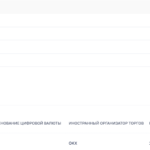
Getting a foot on the property ladder has become increasingly, and infamously, harder. With house prices grotesquely outstripping wages by a significant margin—average property prices have soared by nearly 50 percent over the past decade while wage growth limped behind at just 28 percent—it’s no surprise that52 percent of young people now believe they will never be able to buy a home.
Homeownership among those under 35 has halved since the 80s. The housing crisis, once a generational challenge, is morphing into what seems to be a near-permanent fixture in the UK economy.
Average house prices in the UK have now hit a staggering £292,505, rising month after month. To even get a sniff at a dilapidated two-bed terrace in the Midlands, young hopefuls are being forced to cough up deposits averaging £30,000—before factoring in legal fees, stamp duty, and other costs, pushing the total amount needed to previously unimaginable heights.
For most first-time buyers, saving these sums feels impossible, especially when rents continue to rise relentlessly. In London, for example, the average rent for a single room in a shared house has surged to just shy of £1,000 a month. With inflation on an upward trend, products and services more expensive than ever, and with wages largely failing to keep up, disposable income is shrinking fast.
So, when Nationwide announced its new deal offering first-time buyers mortgages worth six times their salaries, it might have seemed like a forward-thinking, generous plan to help those struggling to save. On the surface, it looks like a long-awaited lifeline to buyers priced out of the market. And perhaps, to a degree, it could be. But looking a little closer, it could also be less of a solution for first-time buyers and instead a way to increase demand—and house prices—for the benefit of banks and lenders.
The strategy shifts the burden of keeping the housing market afloat onto the shoulders of first-time buyers. Pushing people to their financial limits—either by extending the length of mortgages or increasing the amount they can borrow—can play a part in ensuring prices stay high, allowing lenders and large-scale investors to reap the profitability benefits of rising property values.
For young buyers, this means entering the market on a more precarious financial footing. A mortgage of six times their salary risks leaving many stretched, especially if interest rates rise or their financial situation changes.
A loan of this magnitude can also increase the risk of default, especially in today’s volatile economic environment. An analysis by Mazars in 2023 indicated that a mortgage is considered risky if it’s at least 4.5 times the borrower’s earnings.
And while property prices might stay high in the short term, economic conditions can be fickle. If the housing market corrects, these buyers could find themselves in negative equity—owing more than their homes are worth—with little financial flexibility to weather the storm.
The uncomfortable truth is that larger debt-to-income ratio loans set a dangerous precedent. Stretching borrowers this way may keep the market buoyant, but it’s a precarious strategy that masks a deeper issue: the unsustainable gap between house prices and wages. Instead of addressing the root of the problem—lack of affordable housing and speculative investment in the housing market—this strategy keeps the market artificially inflated, leaving first-time buyers to carry the risk.
So while Nationwide’s new mortgage offer may seem like an appealing shortcut onto the housing ladder, it’s unclear just how beneficial it will be long-term. If we want real solutions to the housing crisis, it’s going to take more than stretching young people’s finances to the limit.



















